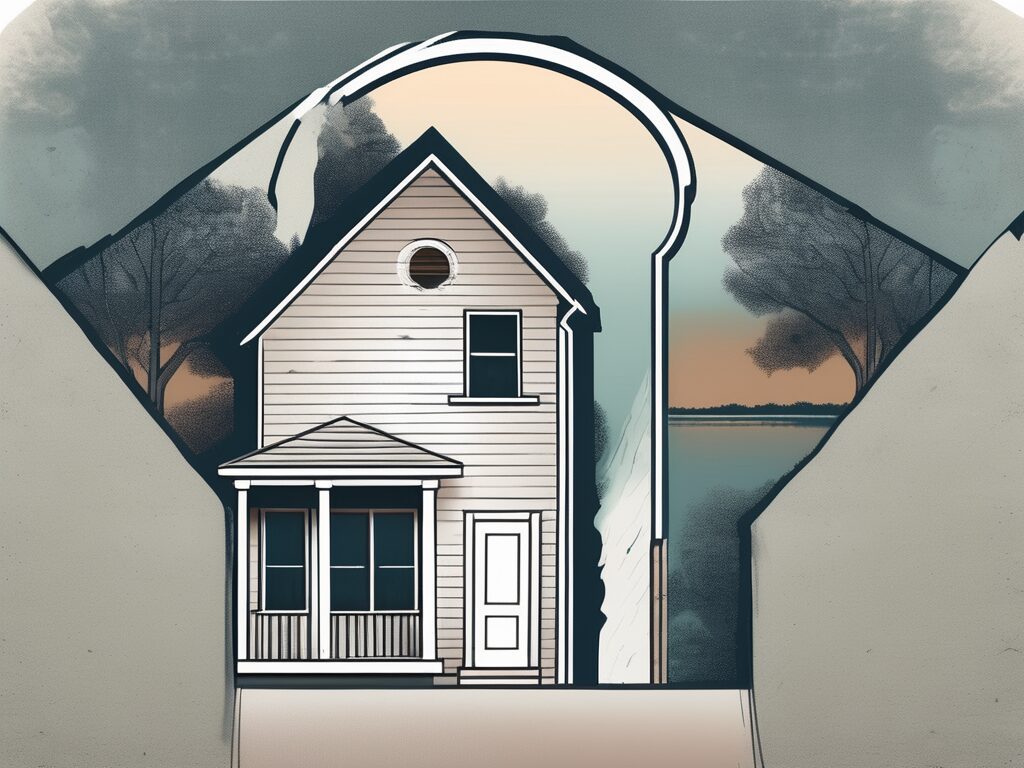
Agent A-Team or Solo Superhero? Finding the Right Real Estate Partner for Your Selling Journey in Wildwood Florida
When it comes to selling your home in Wildwood, Florida,…
January 29, 2024
In the competitive Illinois real estate market, buying a new home can often feel like a race against time. What happens when you find your dream home, but haven’t sold your current property yet? This is where residential bridge loans come into play. In this comprehensive guide, we will explore the ins and outs of bridge loans in Illinois, including their benefits, limitations, and whether they might be the right choice for you.
When it comes to financing a new home purchase while still owning your current property, a residential bridge loan can provide a practical solution. To fully grasp the concept, let’s dive into the basics.
Imagine this scenario: you’ve found your dream home, but you haven’t sold your current property yet. You don’t want to miss out on the opportunity to secure your dream home, but you also don’t want to be burdened with the pressure of an immediate sale. This is where a residential bridge loan comes into play.
A bridge loan is a short-term loan that helps bridge the gap between the purchase of a new home and the sale of your existing property. It serves as a temporary source of funds, allowing you to secure your dream home without the pressure of an immediate sale.
Bridge loans are typically secured by the equity in your current home and can be used for various purposes, including covering the down payment on your new home or paying off your existing mortgage until your old property sells. They generally offer competitive interest rates and flexible terms, making them an attractive option for many homeowners in Illinois.
With a bridge loan, you can confidently move forward with purchasing your new home, knowing that you have the financial support to make it happen. It provides a sense of security and peace of mind during what can be a stressful time in the real estate market.
In Illinois, bridge loans function similarly to those in other states. Once approved, you can use the loan to purchase your new home while still owning your current property. You have a set period, typically six to 12 months, to sell your old home and repay the bridge loan.
During this time, you will need to make payments on both the new mortgage and the bridge loan, which can cause financial strain for some borrowers. However, the convenience and potential payoff of securing your dream home before it slips away can outweigh these temporary challenges.
Illinois, with its diverse real estate market, offers numerous opportunities for homeowners to take advantage of bridge loans. Whether you’re in Chicago, Springfield, or any other city in the state, bridge loans can help you navigate the real estate landscape with confidence.
It’s important to note that bridge loans are not without risks. The real estate market can be unpredictable, and there’s always a chance that your old property may take longer to sell than anticipated. However, with careful planning and guidance from experienced professionals, you can minimize these risks and make the most of your bridge loan.
So, if you find yourself in a situation where you’re ready to move into a new home but haven’t sold your current property yet, consider exploring the option of a residential bridge loan. It could be the bridge that takes you from one home to another, allowing you to embark on the next chapter of your life with confidence and peace of mind.
Bridge loans offer several advantages for homebuyers in Illinois, making them an attractive financing option to consider.
When it comes to purchasing a new home, timing is everything. In a competitive real estate market, where properties can be snatched up within days or even hours, having the ability to act quickly is crucial. This is where bridge loans shine, offering flexibility and speed that traditional financing options often lack.
One of the primary benefits of bridge loans is their flexibility and speed. Unlike traditional financing options, bridge loans are designed to be obtained quickly and offer more lenient qualification criteria. This enables borrowers to move swiftly in competitive markets, securing their dream home before competing buyers have a chance.
Imagine finding the perfect house, the one that checks all the boxes and feels like it was made just for you. With a bridge loan, you can make an offer and close the deal without the lengthy approval process that comes with traditional mortgages. This can give you a significant advantage in a hot real estate market.
Additionally, bridge loans provide flexibility by offering a range of repayment options. Some loans allow borrowers to postpone making any payments until their old property sells. Others may require interest-only payments until the principal is due. This flexibility can help ease financial stress during the transitional period.
Picture this: you’ve found your dream home, but you haven’t sold your current property yet. With a bridge loan, you can avoid the hassle of having to sell your old home first before being able to buy the new one. This can give you peace of mind and the ability to move forward with confidence.
It’s important to weigh the pros and cons of bridge loans compared to traditional financing options before making a decision.
Bridge loans are a short-term solution, usually lasting six to 12 months. Traditional mortgages, on the other hand, typically span 15 to 30 years. The shorter duration of bridge loans can be advantageous if you anticipate a quick sale of your old property.
However, bridge loans often come with higher interest rates and additional fees compared to traditional mortgages. It’s crucial to carefully consider the costs and potential financial implications before committing to a bridge loan.
While bridge loans offer speed and flexibility, they may not be the right choice for everyone. It’s important to consult with a financial advisor or mortgage professional to determine if a bridge loan aligns with your specific needs and financial goals.
In conclusion, bridge loans can be a valuable tool for homebuyers in Illinois. Their flexibility and speed can give you a competitive edge in a fast-paced real estate market. However, it’s essential to carefully consider the costs and potential risks before deciding if a bridge loan is the right financing option for you.
While bridge loans have their advantages, it’s essential to be aware of their limitations.
Bridge loans provide a temporary financing solution for individuals who are in the process of selling their current home and buying a new one. They offer a way to bridge the gap between the sale of the old property and the purchase of the new one. However, like any financial product, bridge loans come with potential drawbacks that borrowers should keep in mind.
One potential drawback of bridge loans is the financial burden of making payments on two properties simultaneously. When you take out a bridge loan, you are essentially taking on additional debt while still having to manage the mortgage payments on your existing home. If your old home takes longer to sell than expected, you may find yourself struggling to meet these dual obligations. This can put a strain on your finances and may require careful budgeting to ensure that you can cover all your expenses.
Additionally, bridge loans rely on the equity in your current property. The amount of equity you have in your home is a crucial factor that lenders consider when determining whether to approve your bridge loan application. If your home hasn’t appreciated in value or you have limited equity, securing a bridge loan may be challenging. Lenders typically require a significant amount of equity to mitigate their risk. This means that if you have a small amount of equity or if your home’s value has remained stagnant, you may face difficulties in obtaining a bridge loan.
Furthermore, bridge loans often come with higher interest rates and fees compared to traditional mortgage loans. This is because bridge loans are considered riskier for lenders due to the short-term nature of the loan and the potential uncertainties involved in the sale of the old property. It’s important to carefully evaluate the costs associated with a bridge loan and consider whether the benefits outweigh the financial implications.
Another limitation of bridge loans is that they are not suitable for everyone. Borrowers who have unstable income or uncertain employment prospects may find it challenging to qualify for a bridge loan. Lenders typically require proof of stable income and a strong credit history to approve bridge loan applications. If you don’t meet these criteria, you may need to explore alternative financing options.
Lastly, it’s important to note that bridge loans are designed to be short-term solutions. They typically have a repayment period of six months to a year. If you are unable to sell your old home within this timeframe, you may need to consider other options, such as refinancing the bridge loan or exploring alternative financing arrangements.
While bridge loans can provide a valuable solution for individuals who need temporary financing during the home buying process, it’s crucial to carefully consider their limitations. Understanding the potential drawbacks and evaluating your financial situation can help you make an informed decision about whether a bridge loan is the right option for you.
While bridge loans offer unique benefits, they are not suitable for every situation.
Bridge loans, also known as swing loans or gap financing, can be a valuable tool for homeowners facing specific circumstances. These loans provide temporary financing to bridge the financial gap between the sale of an existing property and the purchase of a new one. However, it is important to carefully evaluate your situation before deciding if a bridge loan is the right choice for you.
Bridge loans can be a lifeline for homeowners in specific circumstances. If you have found your dream home, but the sale of your existing property is uncertain, a bridge loan can bridge the financial gap and ensure that you don’t miss out on your desired home.
Imagine this scenario: you stumble upon a charming Victorian house that ticks all the boxes on your wish list. It has the perfect location, ample space for your growing family, and a picturesque backyard. You can already envision your children playing in the yard and hosting memorable gatherings with friends and loved ones. However, there’s one major hurdle: you haven’t yet sold your current home.
Here’s where a bridge loan can come to the rescue. By securing a bridge loan, you can access the funds needed to purchase the new home while waiting for your existing property to sell. This allows you to seize the opportunity and secure your dream home without the fear of losing it to another buyer.
Additionally, bridge loans can be advantageous in seller’s markets where there is high competition and a need for quick action. By securing a bridge loan, you can confidently make an offer on a new home without contingencies, increasing your chances of acceptance.
Picture this: you’re in a seller’s market, where homes are selling like hotcakes. The moment a property hits the market, it’s flooded with offers, and you know you need to act fast to have a chance. However, you haven’t yet sold your current home, and you don’t want to miss out on this opportunity.
In this scenario, a bridge loan can give you the competitive edge you need. With a bridge loan, you can make an offer on the new home without the contingency of selling your existing property first. This makes your offer more attractive to sellers, as it eliminates the risk of delays or complications associated with waiting for your home to sell.
Furthermore, bridge loans can provide you with the flexibility to negotiate better terms when buying a new home. With the financial backing of a bridge loan, you can confidently negotiate a lower purchase price or request additional repairs or upgrades, knowing that you have the funds readily available.
It’s important to note that while bridge loans can be a valuable solution in certain situations, they also come with risks and considerations. Interest rates on bridge loans are typically higher than traditional mortgage rates, and there may be additional fees involved. It’s crucial to carefully evaluate the costs and potential risks before committing to a bridge loan.
In conclusion, bridge loans can be a lifeline for homeowners facing specific circumstances, such as uncertain property sales or competitive seller’s markets. By providing temporary financing, bridge loans allow individuals to bridge the financial gap and secure their dream homes without the fear of missing out. However, it’s important to thoroughly assess your situation and consider the associated costs and risks before deciding if a bridge loan is the right choice for you.
To qualify for a bridge loan in Illinois, you need to meet certain criteria set by lenders.
Bridge loan lenders typically require a strong credit score, a low debt-to-income ratio, and a substantial amount of equity in your current home. They will also consider the potential marketability of your old property to assess the likelihood of a quick sale.
It’s crucial to consult with a reputable lender to understand their specific requirements and determine your eligibility for a bridge loan in Illinois.
Bridge loans come with various costs that should be taken into account when considering this financing option.
To minimize bridge loan expenses, it’s essential to compare and negotiate the interest rates and fees offered by different lenders. Additionally, you should aim to sell your old property as quickly as possible to minimize the duration of the loan and associated costs.
Exploring Alternatives to Bridge Loans in Illinois
While bridge loans can be a useful tool, they are not the only financing option available to homebuyers in Illinois.
If a bridge loan doesn’t align with your needs or circumstances, alternatives such as home equity lines of credit (HELOCs) or home equity loans may be worth exploring. These options provide access to funds based on the equity in your current property and can be used for a variety of purposes, including purchasing a new home.
It’s crucial to consult with a knowledgeable mortgage professional to explore all available financing options and determine which one best suits your individual situation.
In the competitive Illinois real estate market, residential bridge loans can offer a vital lifeline for homebuyers looking to secure their dream home before selling their current property. Understanding the basics, advantages, and limitations of bridge loans is essential for making an informed decision.
Remember, bridge loans provide the flexibility and speed necessary to navigate competitive markets, but they also come with increased costs and financial obligations. By carefully weighing the pros and cons and considering alternative financing options, you can unlock homeownership in Illinois with confidence.

If you want the Richr team to help you save thousands on your home just book a call.
 Book a call
Book a call